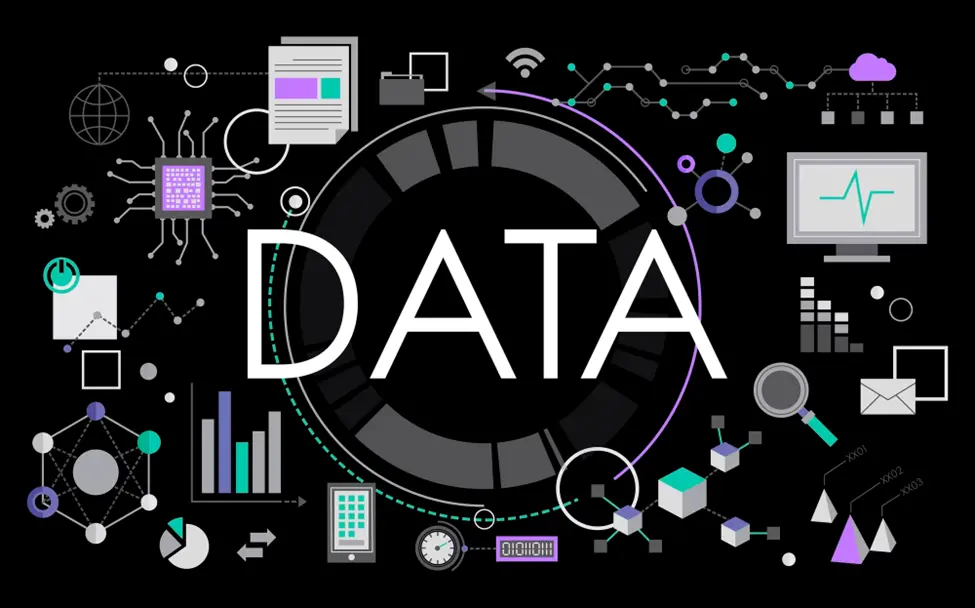Let’s say you’re the owner of a major online retail store. You aim at boosting your sales and strengthening your market presence.
At one point, you may be wondering if there is a relationship between the different factors affecting your business. Like whether there is a correlation between the time spent on your website and the likelihood of a purchase? Or perhaps there’s a link between the age of a customer and their preferred product category? You can get all these insights with correlation data analysis.
No matter your industry. If you are concerned about targeting your KPIs and setting the strategies for reaching them based on data, this article is for you. We’ll explore the ‘why’, ‘how’, and ‘what’ of correlation data analysis and how it’s transforming business decision-making.
What is correlation analysis?
Correlation analysis is a method of statistical evaluation that helps study the strength of a relationship between two or more continuous variables. It seeks to quantify the degree to which these variables are interdependent. The relationship in question can be:
- Positive — both variables increase or decrease together
- Negative — one variable increases while the other decreases
- Non-existent — no correlation between the variables
For instance, if you find a strong positive correlation between customer satisfaction scores and repeat purchases, you might put more resources into improving the customer experience. On the other hand, uncovering a negative correlation between website loading time and user engagement might prompt your efforts to enhance website speed.
💡 Correlation does not imply causation. While it reveals the connection between variables, it doesn't necessarily mean one variable is the cause of the change in the other.
Importance of correlation in data analysis
With correlation analysis, you can understand your business operations, customer behavior, and market trends at a much deeper level.
- Customer behavior analysis to uncover patterns in their behavior and personalize offerings. 71% of customers expect to get personalized interactions and 76% are frustrated when companies don’t deliver this.
- Sales forecasting to spot the correlation between variables like time of year and sales. Only 45% of companies are confident in forecasting accuracy, while 13% admitted that they have poor data quality, which leads to far-reaching negative effects and unintended consequences.
- Optimizing marketing efforts to see how different marketing channels contribute to sales. Businesses that used data-driven strategies for marketing had driven five to eight times as much ROI as those who don’t.
- Product development benefits from the use of correlation analysis. It helps deliver products to the market 90% faster with the decline of total ownership cost by 30%.

How correlation data analysis can be useful for business?
The practical uses of correlation analysis in business can be vast. Let’s look at five industries where this method can drive decision-making and strategic planning.
Retail
Retail businesses mainly use correlation analysis to uncover relationships between customer behavior and sales trends. The insights achieved from this analysis may make a difference for inventory management, pricing strategies, and promotional campaigns. For instance, as you find a correlation between discount rates and sales volumes, you can set optimal pricing strategies.
🛍️ Use case
A popular online clothing store discovered through correlation analysis that the number of product images displayed directly correlated with the purchase rate. With this knowledge, they redesigned their website to feature more product images. This resulted in a notable increase in sales.
Healthcare
In healthcare, you may want to use correlation analysis to identify patterns between patient characteristics, disease incidence, and treatment outcomes. These insights can inform you about patient care strategies and assist in preventive health initiatives. For instance, a correlation between certain lifestyle factors and chronic diseases can guide patient education programs.
🏥 Use case
A healthcare organization performed correlation analysis on patient data and found a strong positive correlation between diabetes and certain cardiovascular conditions. Based on these findings, they implemented targeted preventative care for diabetic patients and reduced overall healthcare costs.
Finance
Why use correlation if you’re a financial institution? You may want to consider this step to identify risk factors in investment portfolios, understand market trends, and guide investment decisions.
💰 Use case
A global investment firm used correlation analysis to identify a relationship between the GDP growth rate of emerging markets and the performance of specific investment portfolios. As a result, they adjusted their investment strategy. The company optimized it for higher returns during periods of robust growth in these markets.
Manufacturing
If you deal with manufacturing goods, this statistical method will help optimize production processes. You’ll be able to define relationships between various factors like machine settings, raw material quality, and finished product standards. All in all, this will lead to improved quality control and cost-efficiency.
🏭 Use case
A car manufacturing company identified a negative correlation between machine maintenance frequency and production downtime through correlation analysis. This insight led them to revise their maintenance schedules, which increased productivity and cost savings.
Technology
Tech companies may consider applying correlation analysis to understand user behavior, improve product features, and enhance user experience. For example, as you find a correlation between app feature usage and user retention, the received insights can guide product development.
📱 Use case
A mobile app company discovered a correlation between the use of certain app features and higher user engagement levels. The company then highlighted these features in its marketing campaigns. This helped them increase revenue and attract more users.

Advantages and disadvantages of correlation data analysis
If you would like to figure out when to use correlation and whether it will meet your business context, here is a comparative chart that dissects the benefits and potential pitfalls of this method.
| Pros of correlation data analysis | Cons of correlation data analysis |
|---|---|
| Reveals relationships between variables and helps businesses anticipate trends and prepare accordingly. | Doesn't imply causation. Just because two variables are correlated, it doesn't mean one causes the other, which can potentially lead to incorrect conclusions. |
| Simplifies complex datasets by revealing the connections between variables. It makes data easier to understand and interpret. | Most effective when variables have a linear relationship. If the relationship is curvilinear or involves multiple factors, correlation analysis may not provide accurate results. |
| Provides valuable data-driven insights to inform strategic decisions in marketing, sales, customer service, and more. | Over-reliance on correlation analysis can overshadow other important qualitative factors in decision-making. Use it as part of a larger analytical toolkit. |
| It's relatively easy to carry out and understand. You may do with regular business tools like Excel for simple analysis or use open-source programming languages for more complex operations. | Outliers can significantly impact the correlation coefficient, which may potentially lead to misleading results. Thus, you've got to apply robust data cleaning methods to ensure accuracy. |
Conclusion
The correlation analysis definition extends far beyond being a mere statistical tool. It’s a powerful asset in your data analysis toolkit. It can help you unveil hidden relationships within data, guide strategic decision-making, and maximize operational efficiency. From customer behavior patterns to strategic risk management, the implications of correlation data analysis are vast and transformative across diverse industries.
The key to leveraging correlation analysis lies in understanding its appropriate application within a broader analytical framework and complementing it with other qualitative and quantitative analyses.
If you struggle to understand how correlation data analysis could enlighten your business strategy and when exactly to use it, Nannostomus is happy to help you. Contact us today, and let’s discover the opportunities this method can bring.




